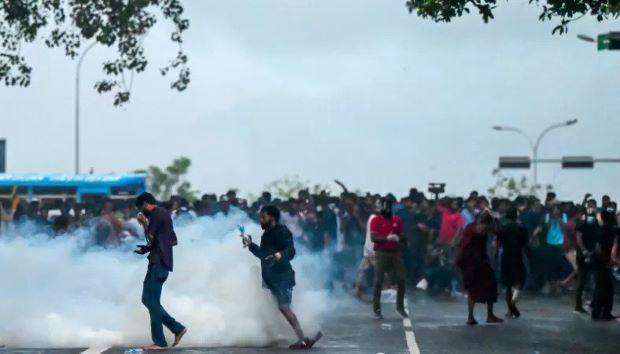How populism led to the crisis in Sri Lanka — and why the youth movement gives reason to hope
If there is one silver lining from this crisis, it is that both Tamil and Sinhalese youth are working together to eject their corrupt leaders
By Ken Kandeepan
Sri Lanka is facing its biggest crisis since independence. Foreign reserves are effectively zero, the shortages of essentials from medicines to cooking gas to food are at crisis levels, and the youth of the country are agitating for the overthrow of the entire legislature. The demonstrations have been marred with violence, initiated by the government; other than the prime minister resigning and a few cosmetic changes in governance, the protesters have yet to achieve their objectives.
The genesis of the current crisis dates back to Sri Lanka’s independence in 1948, when the island was in an enviable economic and social position. Nevertheless, populism in the form of Sinhala Buddhist majoritarianism reared its ugly head soon after. Sinhalese politicians continuously complained that the minority Tamils were disproportionately represented in medicine, engineering, law, the civil service and in business, stoking resentment and anger among the Sinhalese masses.
Successive governments failed to address this imbalance positively, doubling down on Sinhala Buddhist majoritarianism as a substitute for meaningful policies to improve living standards. Draconian, repressive measures were imposed, including legislating Sinhala as the official language of the state, imposing population-based quotas for university admissions, and constitutionally enshrining Buddhism as the de facto state religion.
The rot advanced quickly. The first anti-Tamil riots occurred in 1956, followed by more in 1958. In response, Tamils staged civil disobedience campaigns based on the model of Mahatma Gandhi, which were brutally put down by the state.
The rise of Tamil militancy was an inevitable consequence of the failure of these peaceful campaigns for equal rights. This lead to the infamous anti-Tamil riots in 1983, when an estimated 3,000 Tamils lost their lives alongside the widespread destruction of their homes and businesses. In response, the Tamil Tigers, the main militant movement, ramped up their military campaign, signifying the commencement of the brutal and horrifying civil war that ended in May 2009.
The end of the civil war was the apogee of the state’s brutality against the Tamils, with the total destruction of the Tamil Tigers — and the genocide of anywhere from 40,000 to more than 100,000 civilians, including women and children, massacred by the Sri Lankan armed forces. The Pyrrhic victory over Tamil separatism was greeted with jubilation by the Sinhalese, along with the expectation that Sri Lanka would now enter into a golden age of economic prosperity.
As events turned out, that was not to be. The 30-year-civil war and the passage of the draconian Prevention of Terrorism Act (PTA) contributed to the slow, continued erosion of the rule of law. It also factored in the rise of strongman economics, where multi-billion-rupee projects were initiated not only as sop to the ego of the strongman, but to also facilitate extraordinary levels of corruption — with the ill-gotten gains flowing to the strongman and his cabal.
While Sri Lanka can boast of many past prime ministers and presidents who fit this bill, none took it to the levels that the Rajapakse family did, in both corruption and in the absolute elimination of the rule of law for themselves and their cabal. It’s not that the majority community was unaware of this plunge into semi-dictatorship. But until recently, they regarded the loss in living standards and the accompanying corruption and powerlessness as the price to pay for eliminating the Tamil separatist threat, and ensuring the continued dominance of the Sinhala Buddhists.
This mindset changed dramatically over the last two months, as Sinhalese youth realized that the story they had been fed since independence was in fact the very reason for their current woes. If there is one silver lining from this crisis, it is that both Tamil and Sinhalese youth are working together to eject their corrupt leaders. They hope to establish a governance structure that can slowly reverse the excesses of past governments, and move the island toward the rule of law.
As members of the Tamil diaspora, we wish them well and hope their efforts are crowned with success, so that Sri Lanka can reach its potential in the future.
-Ken Kandeepan is a member of the Advisory Board of the Canadian Tamil Congress and this article was originally featured on thestar.com


